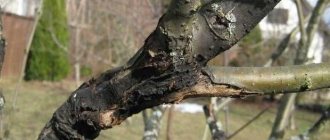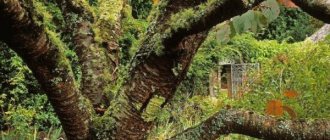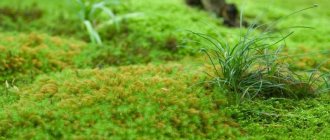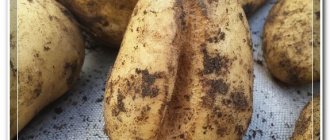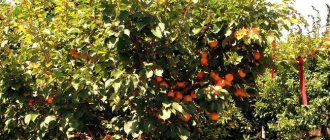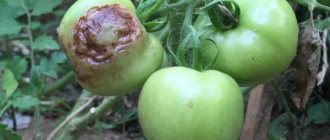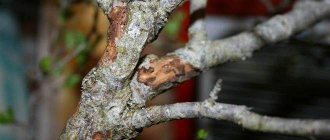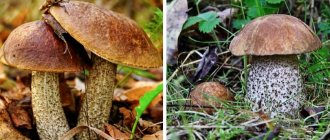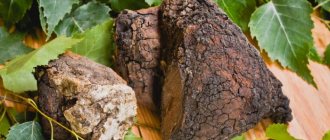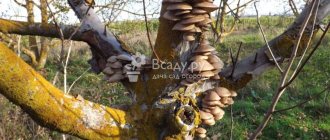Why does the bark on trees crack?
The bark can crack for several reasons: due to severe frost, in the summer due to heat, the bark can be damaged during pruning of trees, there may be other reasons for this phenomenon.
- The main reason for bark cracking is frost. The mechanism of cracking is based on the elementary physical laws of expansion of water (the juice in the tree) when freezing, which is why the bark, unable to withstand the pressure of ice, sometimes cracks.
- The second most important reason is thermal sunburn. The presence of reddish-brown spots on the trunk and branches of a tree indicates the presence of such burns. This is due to the process of photosynthesis. Trees often get burned in the first days of spring. Due to strong heating by the sun's rays, the tissue structure of the trunk, which is not yet adapted to heat after winter frosts, is damaged, causing severe cracking and sometimes even the death of entire sections of the bark
- The bark can become damaged and break off due to physical pressure - for example, from an excess harvest, or heavy wet snow in winter or early spring.
- Trees suffer from damage by rodents - mice, hares. Sometimes these damages are so dangerous that they can even cause the death of the tree.
- Cracks in the bark may appear due to insect pests. For example, bark beetles damage the bark and phloem, through which nutrients are delivered to the tree. Small holes appear on the bark - passages.
- Plant diseases can also cause cracks to appear. Black cancer in garden trees is diagnosed by the appearance of cracks in the bark. This disease appears mainly due to the fact that the roots of fruit trees deepen to the groundwater level.
- The causes of cracking may be excessive fertilizing. The tree is actively growing, but the bark cannot stand it and cracks.
- The following groups of trees are most susceptible to cracking: those subjected to unprofessional pruning, those grown on waterlogged soil, non-winter-hardy varieties, trees, plants that have been incorrectly fertilized (too large doses of nitrogen in August, September or November), and cracking is possible when planted deeply fruit trees.
READ ALSO: Growing persimmons at home from seeds
Overwatering
As a result of too much watering, wood cells grow faster than bark cells, and the plant trunk begins to crack. This can lead to disease and death of the seedling.
Fruit trees need proper and good care. If you do everything right, a generous harvest will await you.
- Author: iarriba
Rate this article:
- 5
- 4
- 3
- 2
- 1
(1 vote, average: 5 out of 5)
Share with your friends!
Why are cracks in trees dangerous?
Cracks pose a much greater danger to wood than might be imagined at first glance. After all, they accumulate microbes, bacteria, viruses that cause various infections.
If the crack is not treated in time, it, like an untreated wound on the human body, begins to become infected, hurt, and increase in size.
In fruit trees, the wound rots over time and forms large damage.
In order to preserve the viability of the tree and the ability to get a harvest from it, emerging cracks must be treated in a timely manner.
How to deal with this disease
In winter, treating the lower part of the apple tree trunk with clay helps prevent peeling of the bark. A specially prepared clay putty is applied to the damaged area, which is first diluted in warm water to a state of medium viscosity.
With the arrival of spring, the cracked bark is carefully removed using a knife or saw. Then the diseased apple tree is treated with a solution of copper sulfate and filled with garden pitch.
Note! Having taken the necessary measures to eliminate the cracked bark, observe the condition of the apple tree: if the tree has stopped bearing fruit, it can be removed from the site next year, since in fact it has already died.
What to do if tree trunks crack
- In case of frosts and sunburns, if they have already occurred and the bark is cracked, treat the cracks with a weak solution of potassium permanganate and cover them with garden varnish.
- If there is a large load on the tree, they put supports under the branches; if there is a lot of snow on the branches, they shake it off.
- If damaged by diseases that cause cracking of the bark (black cancer), in spring and autumn, use iron brushes to clean off the bark and burn it. The wounds are treated with garden varnish.
- To combat rodents, deratization is carried out.
- If bark beetles are present, the degree of damage to the trunk is determined by poking the bark with a knife. If it is hard, then the tree can still be saved by treating with chemicals, but if the bark is easily pierced and comes off the tree, then the tree must be cut down and destroyed - burned, in order to reduce the possibility of infection of other trees.
- When fighting the bark beetle, drugs such as Confidor, Calypso, Antizhuk and others are used. To do this, the drug solution is injected using a syringe into the hole made by the beetle.
READ ALSO: Frost-resistant apple tree variety Dessertnoe Petrova
How to protect the trunk of fruit and non-fruit trees
To preserve the viability of plants, you need to take timely measures. If there are small cracks, it is important to prevent them from spreading further along the trunk and branches. To do this, perform the following sequence of actions:
- Removing dead areas of bark with a sharp, disinfected object, such as a knife.
- Treatment of the crack with a concentrated solution of potassium permanganate, hydrogen peroxide, 3% solution of ferrous sulfate, or others.
- Treatment of the wound with a special putty.
Before covering a crack, it must be treated with antimicrobial agents.
To cover up a crack use:
- a mixture of clay and cow dung: when the putty dries, it is moistened with water so that the clay does not absorb the juice from the bark;
- garden varnish - you can prepare it yourself or buy it in garden stores;
- “Artificial bark” product and other similar putties.
You can prevent the spread of cracks using artificial leather - a dense coating on a varnish-like base. This material protects the bark and does not get wet or mold. Suitable for both young seedlings and old trees.
There is no fundamental difference between the treatment of fruit and non-fruit trees, therefore the algorithm of actions is the same in both cases.
Prevention of crack formation
Whitewashing trees
To prevent the formation of cracks in garden trees, whitewash is used. When whitewashing, you need to maintain the concentration of lime.
To treat young trees, a solution of lower concentration is used than for whitewashing older trees.
Whitewashing tree trunks should be done twice a year - in spring and autumn. Autumn whitewashing is much more important for fruit trees.
Protection from frost and sunburn
In order to prevent the appearance of cracks from frost and sunburn, tree tying is effectively used to insulate them.
Most gardeners use newsprint for this; it protects from the wind and reflects the sun's rays.
Some summer residents and gardeners use non-woven material for these purposes - spunbond or lutrasil.
Furrowing trees
To prevent the appearance of cracks, a furrowing procedure is carried out at the beginning of summer.
To do this, with a well-disinfected knife, longitudinal, intermittent cuts are made to a depth of 1 or 2 millimeters on the north side of the trunk, starting from the crown of the tree and to the roots.
For the first time after planting, this procedure is done when the tree reaches four years of age, after which it is repeated once every five years.
How to deal with this disease
In winter, treating the lower part of the apple tree trunk with clay helps prevent peeling of the bark. A specially prepared clay putty is applied to the damaged area, which is first diluted in warm water to a state of medium viscosity.
With the arrival of spring, the cracked bark is carefully removed using a knife or saw. Then the diseased apple tree is treated with a solution of copper sulfate and filled with garden pitch.
Note! Having taken the necessary measures to eliminate the cracked bark, observe the condition of the apple tree: if the tree has stopped bearing fruit, it can be removed from the site next year, since in fact it has already died.
Clay
Whitewash can easily be replaced by a clay mash. To prepare it, first mix ¼ bucket of clay with 2.5 liters of water and leave for two days. Then filter through a sieve and add horse or cow manure. The mass is mixed and, if necessary, a little more manure is added until the consistency of thick sour cream is obtained. 50 ml of the drug “ReanimatoR” from NVP “BashInkom” is poured into it and mixed until ready.
The resulting clay mash is applied to the bark. If there are already cracks, then they are first disinfected with a 2% solution of potassium permanganate.
Apple tree cracked in half
When a summer resident, going out into the garden, notices that a large fork in the trunk has cracked and damaged the trunk, or the tree has split to the base, or even a crack has gone deep into the soil (inside the underground part of the trunk), you can try to save the apple tree.
There is only one way out: tightening the fault to its original position and after that it is necessary to secure such a tie.
This is the only way to have a chance of healing the fracture. This must be done so that the fastening material covers the trunk on both sides.
The easiest option for fastening split branches and trunks is to fasten the break using two hardwood blocks.
If the owner does not have pieces of wood, then it is allowed to use wooden planks from boxes or thick sticks.
It is necessary that their “thickness” be from 2 to 6 cm, and their length 17-25 cm. For fastening, it is advisable to use steel wire from 2 to 3 mm for small wounds and 5 mm for large ones.
Wood or sticks are necessary to prevent the wire from cutting into the bark of the apple tree trunk. In addition, you need to slip canvas or cloth under the boards.
Having completed the cleft connection, branches on the smaller part of the cleft.
Fastening the trunk using bars and cable.
Advice!
If there is an abundance of apples, you need to install supports to prevent splitting of both large branches and the trunk itself. As soon as the branches begin to sag strongly under the load of fruits, it is necessary to support the branches loaded with apples with “pokes”, without waiting for the apple tree to break in half.
Support for branches during an abundant harvest of apples.
Sometimes there is a reason to simply fix the fracture by removing the smaller of the fractured parts of the trunk
, keeping the largest one. Then the useless portion is cut down along the lower edge of the splitting site itself.
At the same time, it is taken into account that the surface layer of the saw cut should be as smooth as possible.
The bare wound is covered with a mixture of wax and lard, 1 to 1, to protect against drying out and the entry of infectious diseases, and then can be wrapped in old agrofibre.
